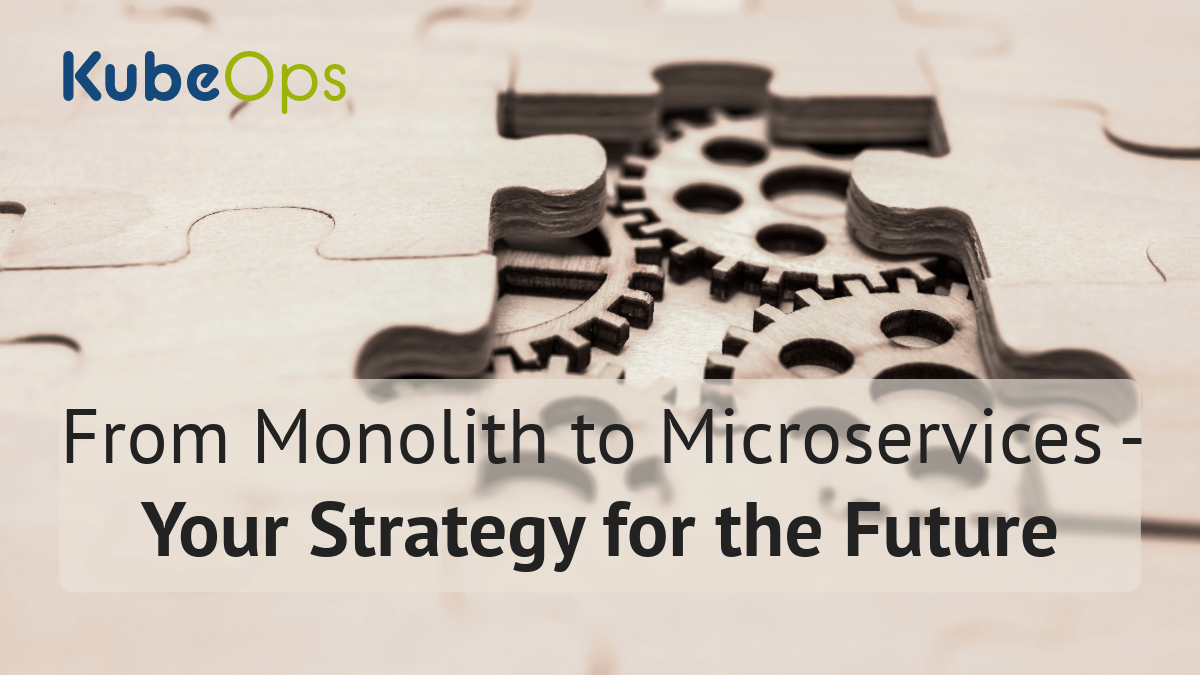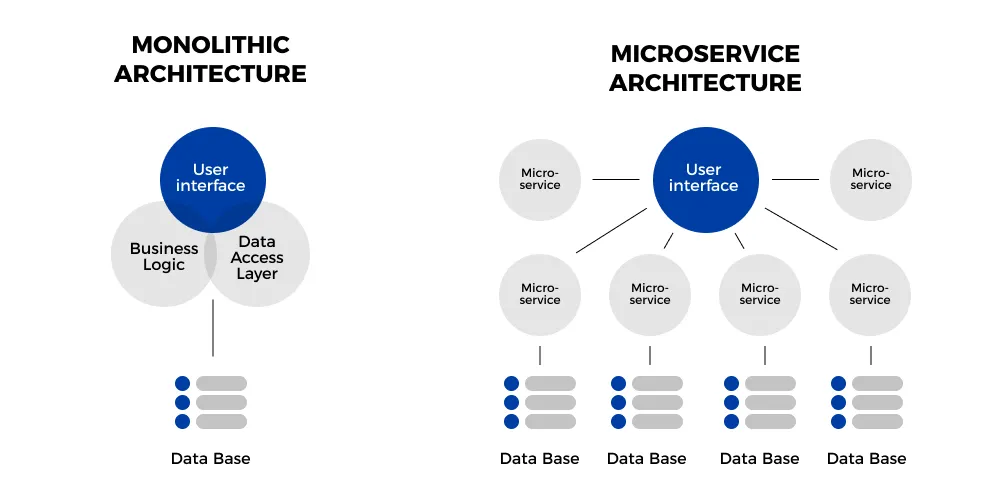Blogs
From Monolith to Microservices – Your Strategy for the Future

In today’s digital economy, standing still is not an option. Companies relying on monolithic applications often face limitations when trying to quickly adapt to market changes or introduce innovative features. While monoliths were once a symbol of stability, they now hinder scalability and slow down innovation.
Transitioning to a microservices architecture – orchestrated by Kubernetes – can be the game-changer to future-proof your business. However, this shift brings not only technical challenges but also requires strategic foresight. In this guide, you’ll learn how to successfully navigate this transformation and achieve long-term agility, scalability, and efficiency.
Why Transition from Monoliths to Microservices?
Challenges of Monolithic Applications
Monolithic architectures consist of a single, tightly coupled codebase. While this structure offers simplicity during early development, it becomes problematic as the application grows:
- Limited scalability: The entire monolith must be scaled, even if only a single component requires more resources.
- Slower innovation: Updates or changes are risky as they can impact the entire application.
- Increased dependencies: Teams must work closely together, often leading to longer development cycles.
Benefits of a Microservices Architecture
In contrast, a microservices architecture divides business domains into separate, independent services:
- Targeted scalability: Each service can be scaled independently, ensuring resource efficiency.
- Faster innovation: Updates can be deployed to individual services without affecting the rest of the application.
- Flexibility: Teams can choose technologies that best fit the needs of each service.

Why Kubernetes?
Kubernetes has become the standard platform for orchestrating microservices. Its strengths include:
- Automation: Kubernetes simplifies the deployment, scaling, and management of applications.
- Resilience: With self-healing capabilities and automated restarts, Kubernetes minimizes downtime.
- Cost-efficiency: Kubernetes optimizes resource usage by dynamically allocating workloads across available infrastructure.
With Kubernetes, businesses can fully realize the benefits of microservices while maintaining a stable, scalable platform.
Strategic Considerations for Migration
1. Define Your Business Goals
- What specific challenges should the new architecture address?
- Are scalability, time-to-market, or cost reductions your top priorities?
2. Gradual Transition
The transformation should not be rushed. The Strangler Fig Pattern is a proven method: new features are developed directly as microservices, while existing parts of the monolithic application are gradually replaced.
3. Risk Management
Migration is complex and comes with risks:
- Costs: Initial investments in training, infrastructure, and development.
- Complexity: Introducing microservices and Kubernetes requires new competencies and workflows.
- Potential downtime: This can be minimized through careful planning and robust testing strategies.
4. Team Enablement
The transformation demands new skills:
- Training on Kubernetes and microservices.
- Fostering a DevOps culture to improve collaboration between development, operations, and quality assurance teams.
Key Success Factors
Technology Selection
In addition to Kubernetes, various tools can facilitate your migration:
- Service Meshes: Tools like Istio or Linkerd simplify service-to-service communication management.
- Monitoring: Prometheus and Grafana provide detailed insights into the performance of microservices.
- Security Management: HashiCorp Vault protects sensitive data like API keys and certificates.
Data Migration
Managing existing data is a critical aspect of migration. Splitting a centralized database into service-specific datastores requires:
- Strategies for data integrity: Techniques like "dual writes" or "change data capture."
- Minimizing downtime: Through synchronized testing and parallel usage of old and new databases.
Governance and Standards
Clear guidelines are essential:
- Unified API standards (e.g., REST, OpenAPI).
- Detailed security protocols to ensure consistency and reduce risks.
- Documentation of microservices to enhance transparency and maintainability.
Continuous Improvement
Migration is not a one-and-done process:
- Collect ongoing feedback from operations to optimize the architecture.
- Use monitoring data to identify and address bottlenecks early.
Conclusion
Migrating from monoliths to microservices with Kubernetes is a strategic step that empowers businesses to become more agile, scalable, and future-ready. While the process may be complex, a gradual implementation, clear business goals, and the right tools can lead to sustainable success.

